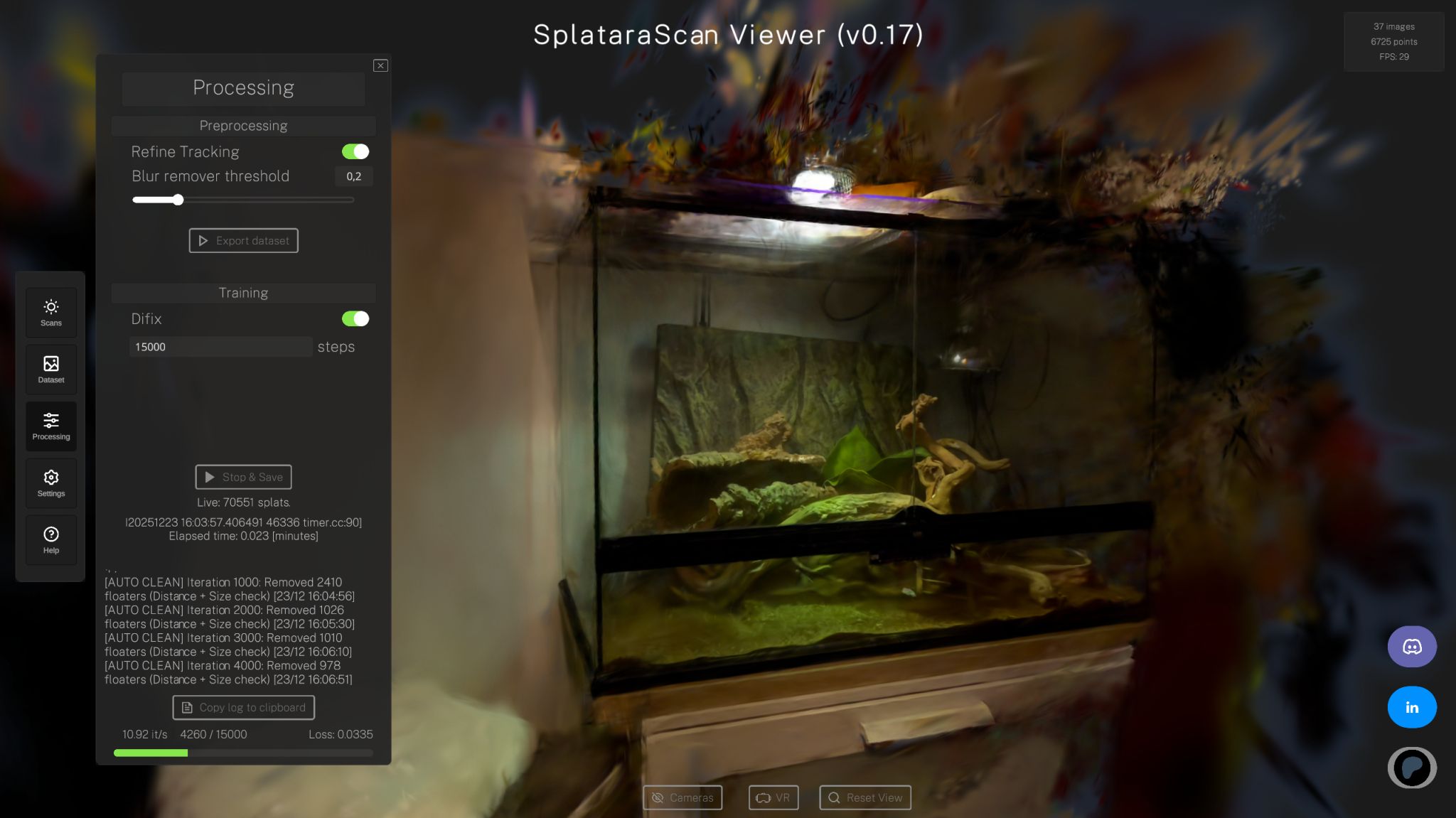

Michael Rubloff
Aug 1, 2025
DJI has stepped into 360 degree capture with a camera that feels purpose built for modern radiance field pipelines, like gaussian splatting with the Osmo 360. Below is a look at what the Osmo 360 offers and why its design choices could make life easier for anyone reconstructing scenes with NeRF or Gaussian Splatting.
Specs
Twin 1-inch square CMOS sensors, each 1/1.1-inch, delivering low-noise, HDR 10-bit footage.
Native 8 K 360-video at up to 50 fps, plus continuous 8 K/30 fps recording for 100 minutes on a single battery.
120 MP stitched stills and 170 Mb s-1 maximum bitrate.
RockSteady 3.0 and HorizonSteady electronic stabilization informed by the built-in gyro.
105 GB internal storage, microSD slot to 1 TB, and USB-C off-load.
Body weight 183 g, waterproof to 10 m without a case.
European price €479.99 with Adventure Combo at €629.99, Canadian price CAD $430; U.S. pricing still pending.
On paper, it looks less like a hobbyist gadget and more like a capture utility. These specs place the Osmo 360 directly against Insta360’s flagship X5. Most 360 cameras crop a rectangular sensor into two circular fisheyes, wasting pixels at the corners. DJI’s square sensors record an image circle that fits the silicon footprint more efficiently, meaning you start every reconstruction with extra photometric detail rather than dead pixels.
The camera carries 105 GB of internal storage for quick shoots and adds a microSD slot when you need hours of footage. For European buyers the Standard Combo lists at 479.99 euro, with the accessory-laden Adventure Combo at 629.99 euro. US pricing begins at $550.
Capturing with 360 cameras for radiance field reconstructions is a total joy. It's an amazing feeling knowing as you walk down your capture path, you're getting so much information. However, the current bane of 360 data to splat workflows has been post processing. A few people, such as GradeEterna, get incredible reconstructions. However, he is the first to admit that workflows are not the most straightforward.
Even though on paper some of these stats beat the X5, InstaStudio is great software for post processing. As of right now for people looking to use these devices for gaussian splatting, I am most focused on the software's ease of use to convert from 360 to high fidelity still images. I'll be excited to see how DJI's solution functions, post capturing.
This is the latest capture device to have a strong place in radiance field workflows. It's encouraging to see another major hardware manufacturer release a compelling device and believe we will see this camera surge in popularity within the community. More information can be found from DJI's website here.







